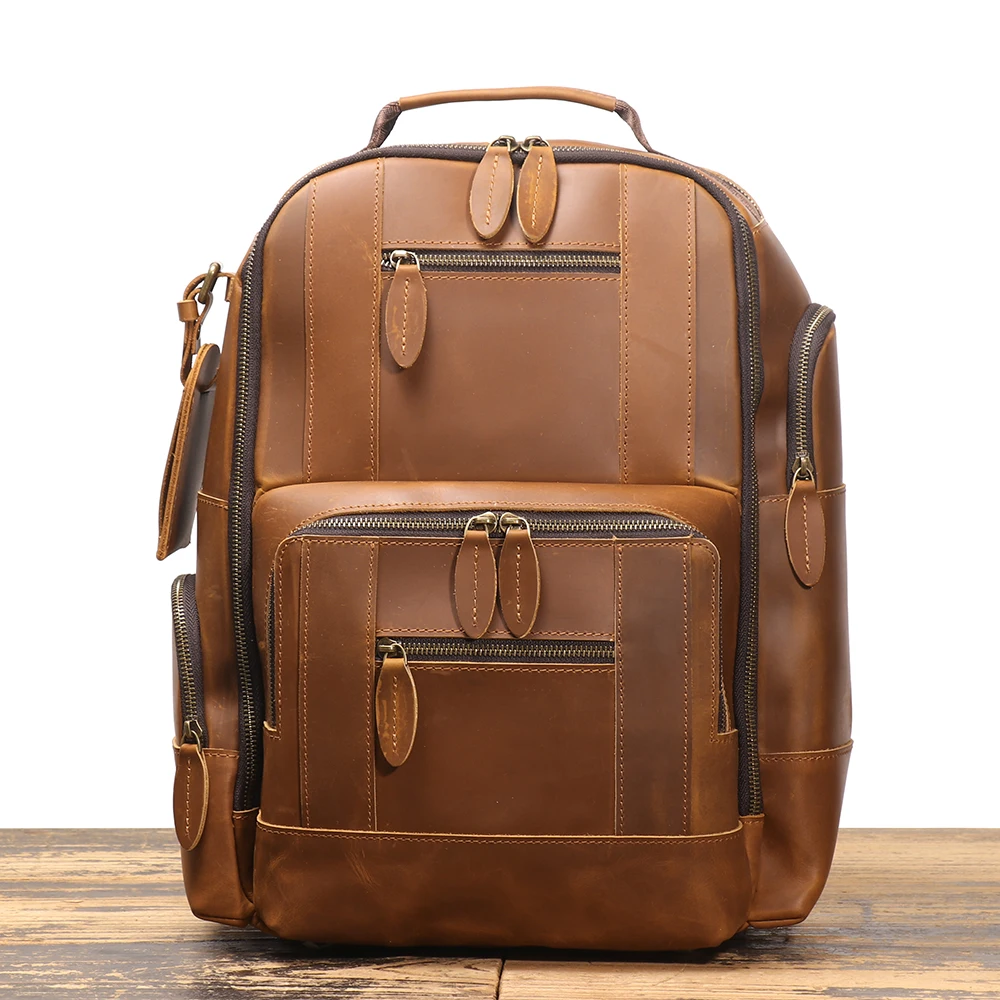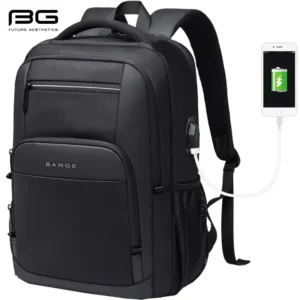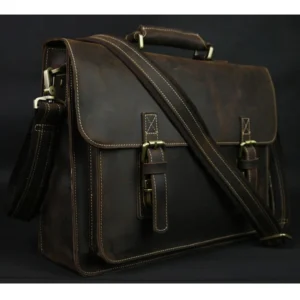Introduction: The Importance of a Properly Fitted Backpack
When it comes to carrying a backpack, the answer is clear: a properly adjusted, snug-fitting backpack is significantly better than a loose one. By “snug,” we don’t mean uncomfortably tight or constricting—rather, we mean stable and secure against your body.
A well-fitted backpack offers several key benefits:
- Improved weight distribution across your strongest body parts
- Enhanced stability during movement
- Better posture and spinal alignment
- Increased comfort during extended wear
- Reduced risk of strain injuries and muscle fatigue
Wearing a backpack that’s too loose or too tight can lead to discomfort, pain, and potentially long-term issues. The way you adjust your backpack isn’t just about comfort—it’s about protecting your body and maximizing efficiency while carrying your belongings.
In this guide, we’ll explore why proper backpack fit matters, the specific benefits of a snug fit, problems with loose backpacks, and how to achieve the perfect adjustment for your needs. Proper leather conditioning and waterproofing can also help maintain the fit and comfort of your backpack throughout its lifetime.
Why a Properly Fitted Backpack Matters for Your Body
Your body has a specific design for carrying weight, and backpacks are engineered to work with—not against—your natural biomechanics. The human spine forms an S-curve that helps distribute and absorb forces. When a backpack sits properly against this curve, it works in harmony with your body’s design.
The ideal backpack position keeps weight close to your center of gravity—just above your hips and close to your back. This position minimizes the forward pull that can strain your shoulders and upper back. When properly fitted, your strongest muscles and bones (particularly the hips) bear most of the weight rather than the more vulnerable areas like your shoulders and neck.
What many people don’t realize is that improper backpack fit can affect your entire kinetic chain. When your pack is loose and shifting, your body constantly makes minor adjustments to compensate, engaging muscles that shouldn’t be working and creating imbalances that can lead to pain. Studies suggest that improperly worn backpacks contribute significantly to back pain, especially in younger users.
The concept of “body-pack integration” is essential—a properly fitted backpack should feel like an extension of yourself, moving with you rather than against you. Many leather travel backpacks are specifically designed with these ergonomic principles in mind, helping you maintain proper posture while distributing weight effectively.
The Benefits of a Snug-Fitting Backpack
Optimal Weight Distribution:
A snug-fitting backpack transfers 70-80% of the load to your hips instead of your shoulders. When the pack sits close to your back and the hip belt is properly tightened, the weight naturally settles over your body’s strongest load-bearing area. This proximity to your center of gravity is crucial—even a small gap between your back and the pack dramatically increases the perceived weight and strain. The physics is simple: the closer the load is to your center of gravity, the less effort required to carry it.Enhanced Stability and Balance:
When your backpack is snugly fitted, it eliminates the swaying, shifting, and bouncing that occurs with loose packs. This stability is particularly important when navigating uneven terrain, climbing stairs, or making sudden movements. A pack that moves independently from your body creates unpredictable momentum that can throw you off balance or cause you to overcompensate. This stability isn’t just about comfort—it’s a safety feature that reduces the risk of falls or injuries during activities.Improved Posture and Reduced Strain:
A properly fitted backpack helps maintain your natural spinal alignment. When a pack is loose, the weight tends to pull backward, causing you to compensate by leaning forward or hunching. This poor posture creates significant strain on your neck, shoulders, and lower back. A snug pack, by contrast, moves with your body and helps maintain proper alignment. Over time, this proper positioning helps prevent the development of chronic pain patterns or repetitive strain injuries.Increased Energy Efficiency:
Perhaps surprisingly, a snug backpack actually requires less energy to carry than a loose one. When your pack is stable and properly positioned, you waste less energy on compensatory movements and stabilization. Your body can move more efficiently, with the pack functioning as a natural extension rather than a pendulum-like burden. Many hikers and commuters report that the same pack feels substantially lighter when properly adjusted, allowing for longer carrying times with less fatigue.
High-quality leather laptop backpacks often feature sophisticated adjustment systems that allow for this optimal weight distribution, making them ideal for daily commuting or business travel.
Problems with a Loose Backpack: Why It’s Not Recommended
• Constant Weight Shifting: A loose backpack swings and shifts with each step, creating unpredictable momentum that forces your body to constantly readjust and stabilize. This not only distracts you but also engages muscles that shouldn’t be working to carry your load.
• Increased Muscle Strain: When your backpack swings away from your body, it creates a pendulum effect that magnifies the actual weight. Your shoulders, neck, and upper back muscles must work overtime to control this movement, leading to accelerated fatigue and potential muscle strain.
• Friction and Chafing: The constant movement of a loose pack creates repetitive friction against your body. Even through clothing, this persistent rubbing can cause uncomfortable hot spots, skin irritation, and painful chafing, especially during extended wear or in hot weather.
• Amplified Impact Forces: With each step, a loose backpack bounces and creates impact forces that multiply the effective weight of your load. This jarring motion transfers shock to your spine and joints, increasing discomfort and the risk of repetitive impact injuries.
• Compromised Backpack Features: Most quality backpacks have carefully designed padding, support structures, and ventilation systems. When worn loosely, these features can’t function as intended, essentially negating the design benefits you paid for.
• Unexpected Snagging: Loose backpacks extend further from your body, increasing the risk of catching on doorways, crowded spaces, or branches on trails. This can cause sudden jerking movements that might lead to loss of balance or injury.
• Poor Load Control: Contents in a loose pack tend to shift and tumble around, potentially damaging fragile items and creating an unbalanced weight distribution that further complicates comfortable carrying.
Understanding leather conditioning techniques can help maintain your backpack’s shape and fit, preventing it from becoming too loose over time through material stretching.
Risks of Wearing a Backpack Too Tight: Finding the Right Balance
While a snug fit is generally preferred, it’s important to distinguish between “snug” and “restrictive.” A properly fitted backpack should never cause discomfort or limit your normal range of motion.
When a backpack is worn too tightly, it can create several problems that are just as concerning as a loose fit:
⚠️ Restricted Breathing: Over-tightening the chest strap or shoulder straps can compress your ribcage and limit your ability to take full, deep breaths. This is especially problematic during physical activity when your oxygen requirements increase.
⚠️ Circulation Issues: Excessively tight straps can compress blood vessels, potentially causing numbness or tingling in your shoulders, arms, or hands. This restricted blood flow not only creates discomfort but can lead to more serious issues during extended wear.
⚠️ Limited Mobility: Your body needs to move naturally, even while carrying a load. Straps that are too tight can restrict your natural movement patterns, particularly around the shoulders and chest, forcing your body to move in unnatural ways that can lead to strain.
⚠️ Pressure Points: Overtightened straps concentrate force on smaller areas, creating painful pressure points rather than distributing weight evenly across padded surfaces as designed.
The key is finding the perfect balance—secure enough that the pack doesn’t shift or bounce, but not so tight that it restricts normal body functions or creates new pressure points. A well-designed pack, like those in our men’s leather backpack collection, will include multiple adjustment points to help you find this optimal balance.
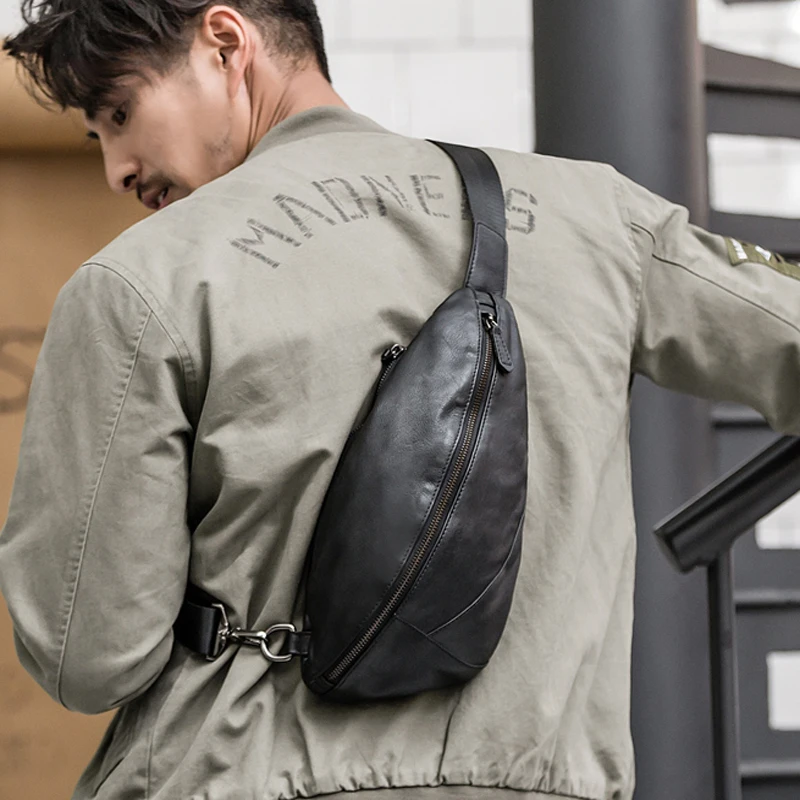
How to Achieve the Perfect Fit: A Step-by-Step Guide
Preparation Before Fitting:
Start by loading your backpack with items that represent your typical carrying weight. Wear clothing similar to what you’ll normally have on while using the pack. Before beginning the adjustment process, loosen all straps completely—this gives you a clean slate for proper fitting.Torso Length: The Foundation of Proper Fit
Your torso length (not your overall height) determines the appropriate backpack size. To measure, find the distance from the C7 vertebra (the bony bump at the base of your neck) down to the iliac crest (the top of your hip bones). Most quality backpacks come in different sizes or offer adjustable suspension systems to accommodate your specific measurements.Hip Belt Positioning and Adjustment:
The hip belt should sit directly on your iliac crest—not above it on your waist or below on your hips. Position the pack and tighten the hip belt so it’s snug but comfortable. You should be able to fit two fingers between the belt and your body. This connection is crucial as your hips should bear 70-80% of your pack’s weight.Shoulder Strap Adjustment:
After securing the hip belt, pull the shoulder straps down and back. They should wrap smoothly over your shoulders without gaps, but they shouldn’t bear much weight or pull down excessively. Proper shoulder strap positioning anchors the pack to your back without creating pressure points. You should be able to slide two fingers between the straps and your shoulders.Load Lifter Straps: Fine-tuning the Upper Pack:
These often-overlooked straps connect the top of the shoulder straps to the top of the backpack. Adjust them to create approximately a 45-degree angle, which pulls the upper portion of the pack closer to your body. This adjustment prevents the top of the pack from pulling away from your back, improving balance and weight distribution.Sternum Strap Adjustment:
Position the sternum strap approximately 1-2 inches below your collarbone. Tighten it just enough to pull the shoulder straps inward slightly, preventing them from slipping off your shoulders. It shouldn’t restrict your breathing or create pressure on your chest.Compression Straps: Securing Your Load:
Use side, top, and bottom compression straps to stabilize the contents of your pack and bring the load closer to your center of gravity. Tighten these straps more when carrying smaller loads to prevent shifting, and adjust them according to how full your pack is.
Remember that proper backpack care, including waterproofing leather bags, helps maintain the integrity of adjustment features, ensuring consistent fit over time.
Fit Variations for Different Backpack Types
| Backpack Type | Primary Fit Considerations | Weight Distribution Focus | Key Adjustment Features |
|---|---|---|---|
| Daypack/Everyday Carry | Comfortable shoulder straps, moderate stability | 40% hips, 60% shoulders | Simplified harness, basic sternum strap |
| Hiking/Trekking Pack | Precision fit essential, high stability needed | 70-80% hips, 20-30% shoulders | Full adjustment system with load lifters, substantial hip belt |
| Travel Backpack | Balance of comfort and security, accessibility | 50-60% hips, 40-50% shoulders | Adjustable torso length, stowable straps |
| Running/Athletic Pack | Ultra-snug fit, bounce prevention | 30% hips, 70% shoulders | Multiple compression points, high-positioned sternum strap |
| School/College Backpack | Basic comfort, moderate stability | 30-40% hips, 60-70% shoulders | Padded shoulder straps, simple hip belt or none |
Each backpack type requires slightly different fitting priorities based on its intended use. For example, men’s leather travel backpacks often feature more robust adjustment systems to accommodate the varied needs of travelers carrying heavier loads for extended periods.
Signs Your Backpack Doesn’t Fit Properly
• Red marks or deep indentations that remain more than 20 minutes after removing the pack
Solution: Adjust the pressure distribution or add padding to problem areas
• Numbness or tingling in arms, hands, or fingers
Solution: Loosen shoulder straps and ensure the weight transfers properly to hip belt
• Chafing or hot spots on shoulders, back, or hips
Solution: Check for areas where the pack moves against your body and secure those sections
• Persistent neck or upper back pain after wearing the backpack
Solution: Verify proper torso length fit and adjust load lifters to keep weight close
• Lower back pain or fatigue
Solution: Reposition hip belt to sit properly on iliac crest and take more weight off shoulders
• Constantly shifting or adjusting the pack while walking
Solution: Tighten compression straps and ensure hip belt is properly secured
• Feeling off-balance or the need to lean forward while walking
Solution: Move heavier items closer to your back and higher in the pack
• Excessive sweating in specific areas where the pack contacts your body
Solution: Check for proper ventilation channels and ensure the pack isn’t overly tight in those areas
Understanding material quality impacts fit and comfort significantly, as explored in our guide to full-grain leather for backpacks.
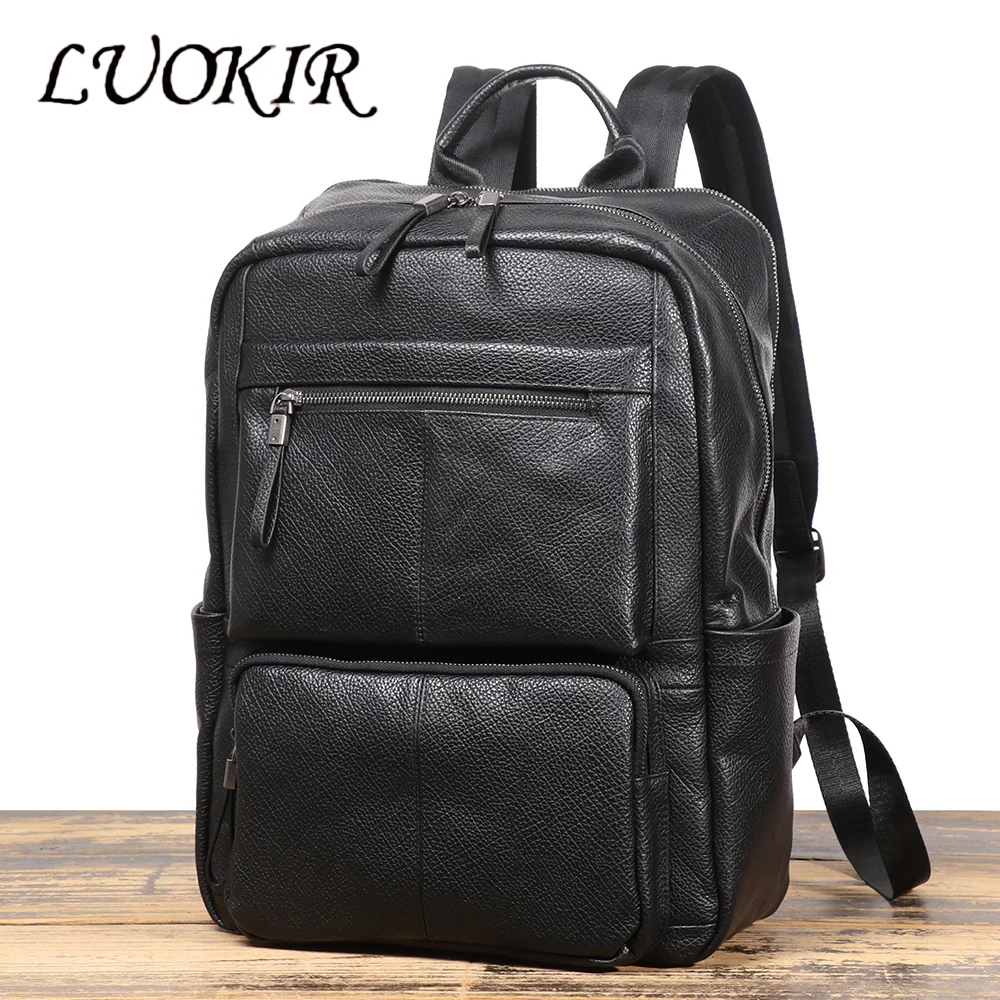
Backpack Fit Considerations for Different Body Types
Backpack fit isn’t one-size-fits-all—your unique body structure significantly impacts how a pack should fit against your frame.
For those with broader shoulders or chest, look for packs with adjustable shoulder strap positioning or wider harness designs. You may need to loosen sternum straps more than average, and S-shaped shoulder straps often provide better comfort by contouring around chest muscles or breast tissue.
Individuals with narrower frames benefit from packs with multiple compression points to prevent shifting. Shoulder straps may need to be positioned closer together, and a properly tightened sternum strap becomes especially important to prevent the shoulder straps from slipping.
Torso length variations significantly affect fit regardless of overall height. Those with longer torsos need packs with extended suspension systems, while shorter torsos require compact designs with closer attachment points between the hip belt and shoulder harness.
Different hip structures also influence fit—those with more pronounced hip bones provide natural anchoring points for hip belts, while less defined hip structures may require slightly higher belt positioning and firmer tightening to prevent slipping.
Gender-specific designs often address these anatomical differences. Women’s-specific packs typically feature narrower shoulder harnesses, contouring for chest comfort, and hip belts shaped for wider hip bones. Our women’s leather backpack collection considers these key differences in fit requirements.
For growing children, adjustable packs are essential as their proportions change rapidly. Special attention should be paid to weight limits—the pack and contents combined should generally not exceed 15% of a child’s body weight.
Common Backpack Fitting Mistakes to Avoid
Carrying weight on shoulders instead of hips
Many backpack users never properly engage the hip belt, forcing their shoulder muscles to bear weights they’re not designed to handle. Always transfer the majority of weight to your hips by properly positioning and tightening the hip belt first.Positioning the hip belt incorrectly
Wearing the hip belt around your waist (above hip bones) or too low on your hips prevents proper weight distribution and can cause discomfort. The belt should sit directly on your iliac crest—the top ridge of your hip bones.Ignoring load lifter straps
These small straps at the top of the shoulder harness make a significant difference in comfort and stability. When properly adjusted to a 45-degree angle, they prevent the top of your pack from pulling away from your body.Using the same adjustment for different loads
A properly fitted empty backpack will be too loose when fully loaded. Always readjust your pack when making significant changes to the weight or volume of contents.Single-shoulder carrying
Even for brief periods, slinging your backpack over one shoulder creates harmful muscle imbalances and spinal stress. Always use both shoulder straps, even for light loads.Choosing oversized backpacks
A pack that’s too large for your needs encourages overpacking and poor weight distribution. Select a size appropriate for your typical load, using compression straps to stabilize smaller loads when necessary.Neglecting regular readjustment
Straps naturally loosen during activity. Develop the habit of performing minor fit adjustments periodically during longer carrying sessions.
Understanding how to care for your leather backpack while traveling helps maintain proper fit features and ensures comfort throughout your journey.
How to Maintain Your Backpack’s Fit Over Time
Even the best-fitted backpack requires ongoing maintenance to preserve its fit characteristics. Over time, materials stretch, padding compresses, and adjustment mechanisms wear down.
Regularly check all strap components for signs of wear, particularly at connection points where friction occurs. Look for fraying webbing, stretched holes, or deformed buckles that might compromise proper adjustment.
Pay special attention to:
– Shoulder strap padding that’s become compressed or shifted
– Hip belt padding that’s lost its firmness
– Buckles that no longer hold securely under tension
– Compression straps that have stretched beyond effective use
For leather backpacks, proper conditioning prevents excessive stretching or stiffening that might alter the fit. Avoid overloading your pack beyond its designed capacity, as this accelerates wear on all components.
When storing your backpack between uses, loosely buckle the straps rather than leaving them fully tightened or completely loose. This helps preserve the elasticity of adjustment webbing. Store in temperature-controlled environments when possible, as extreme heat or cold can affect material properties.
Rather than replacing an entire backpack when fit components begin to fail, consider replacing individual parts like hip belts, shoulder straps, or buckles when possible. Many premium backpacks, particularly those made with quality materials like our full-grain leather backpacks, offer replacement parts that extend the usable life of your investment.
When a Slightly Looser Fit Might Be Appropriate
While a snug fit is generally preferable, there are specific scenarios where a slightly—emphasis on slightly—looser adjustment might be appropriate.
For ultralight loads (under 10% of your body weight), the stability requirements decrease. A daypack containing just a water bottle and light jacket doesn’t require the same hip belt engagement as a fully loaded hiking pack. In these cases, shoulder straps can be marginally looser while still maintaining basic stability.
14 Inch Leather Laptop Backpack, Brown Leather Backpack, Men's Leather Backpack, Vintage Leather Backpack
Price range: $177.28 through $199.12 Select options This product has multiple variants. The options may be chosen on the product pageCarry On Leather Backpack, Roll Top Leather Backpack
Price range: $77.76 through $96.48 Select options This product has multiple variants. The options may be chosen on the product pageDesigner Men's Backpack, Men's Leather Laptop Backpack, Men's Leather Work Backpack
Price range: $158.04 through $160.04 Select options This product has multiple variants. The options may be chosen on the product pageDesigner Mini Backpack, Mini Leather Backpack, Small Leather Sling Backpack, Women's Leather Backpack
Price range: $95.76 through $98.80 Select options This product has multiple variants. The options may be chosen on the product pageDesigner Mini Backpack, Designer Women's Backpack, Mini Leather Backpack, Women's Leather Backpack
Price range: $135.92 through $137.64 Select options This product has multiple variants. The options may be chosen on the product page15 Inch Leather Laptop Backpack, Leather Briefcase Backpack
$332.96 Select options This product has multiple variants. The options may be chosen on the product page
During activities requiring extensive upper body movement, such as trail running or scrambling over rocks, a slightly less restrictive sternum strap and shoulder harness might allow for better mobility. The key is finding the balance between stability and freedom of movement.
In extremely hot conditions where ventilation becomes a priority, slightly loosening the pack to create minimal air gaps can help reduce sweating and discomfort. However, this should never compromise the basic stability of the load.
Even in these situations, “looser” is relative—the pack should never swing freely or bounce significantly. Think of it as a controlled adjustment for specific conditions rather than a fundamentally different approach to backpack wearing.
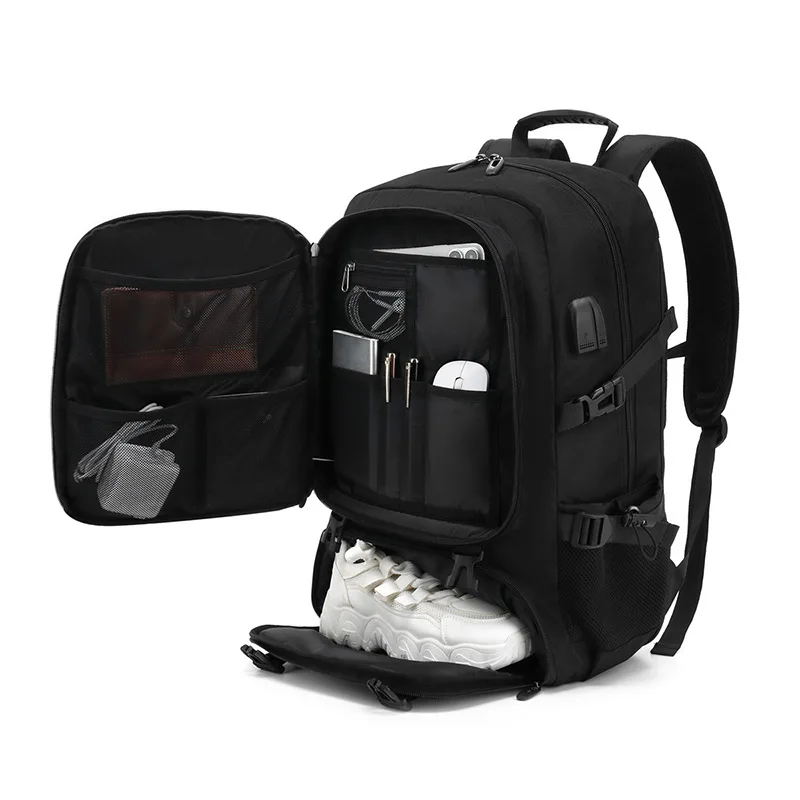
Is Your Backpack Causing Back Pain? Fit-Related Issues and Solutions
Q: Why do I have pain between my shoulder blades after carrying my backpack?
A: This typically indicates that your shoulder straps are bearing too much weight. Ensure your hip belt is properly positioned and tightened to transfer weight away from your shoulders. Also check that load lifters are adjusted to keep the pack close to your back.
Q: What causes lower back pain when wearing a backpack?
A: Lower back pain often stems from improper hip belt positioning or a pack that sits too low. Adjust your hip belt to rest directly on your iliac crest (hip bones), not your waist or lower hips. Also, verify that your pack’s torso length matches your measurements.
Q: Why do I experience neck strain with my backpack?
A: This commonly occurs when the pack pulls backward, forcing your head forward to counterbalance. Tighten load lifter straps to keep the top of the pack close to your body, and ensure heavy items are packed close to your back rather than in outside pockets.
Q: What causes hip bruising or soreness?
A: Hip discomfort usually indicates pressure points from an improperly positioned or overly tight hip belt. Ensure the padding fully covers your hip bones, and consider slightly loosening the belt while still maintaining weight transfer. Some users benefit from positioning the belt slightly higher or lower based on their unique hip structure.
Investing in a backpack with quality ergonomic design features, like those discussed in our quality leather backpacks guide, can significantly reduce these common pain issues.
Premium Leather Backpacks and Proper Fit: Special Considerations
Leather backpacks have unique characteristics that affect fit and comfort in ways that differ from synthetic materials. Understanding these differences helps you maximize the comfort of your premium leather backpack.
Unlike synthetic materials that maintain consistent flexibility, leather undergoes a natural break-in process. During the first few weeks of use, leather straps and contact points will gradually conform to your body shape. Initial fit should be slightly snugger than feels ideal, as the material will relax and mold to your specific contours with use.
The weight of leather itself is another consideration. Full-grain leather backpacks typically weigh more than synthetic alternatives even when empty, making proper weight distribution even more crucial. The hip belt becomes especially important for leather packs to ensure comfort during extended wear.
Temperature and humidity affect leather’s flexibility. In cold conditions, leather stiffens slightly and may require looser initial adjustment until the material warms up. In hot, humid environments, leather can stretch more than usual, potentially requiring more frequent adjustment during use.
When adjusting premium leather straps, avoid excessive force or creating sharp bends that might damage the material. Instead, make gradual adjustments that allow the leather to adapt naturally. This patience preserves both the aesthetic appeal and functional longevity of your leather backpack.
The Bottom Line: Invest Time in Proper Backpack Fitting
A properly fitted, snug backpack is undeniably superior to a loose one for comfort, efficiency, and health. Remember that “snug” means stable and secure against your body—not restrictively tight or uncomfortable.
The benefits of taking time to properly adjust your backpack include:
- Significantly reduced strain on your shoulders, neck, and back
- Better balance and stability during all activities
- More comfortable carrying experience, even with heavier loads
- Decreased fatigue during extended wear
- Reduced risk of developing chronic pain patterns
Proper fit isn’t a one-time setup—it’s an ongoing process that requires occasional readjustment based on changing loads, activities, and even your clothing. Taking just a few minutes to adjust your backpack properly can transform your carrying experience from painful to pleasant.
Your back, shoulders, and overall posture will thank you for investing this small amount of time in achieving the perfect backpack fit. Whether for daily commuting, travel, or outdoor adventures, a well-fitted backpack becomes a reliable companion rather than a burden.
